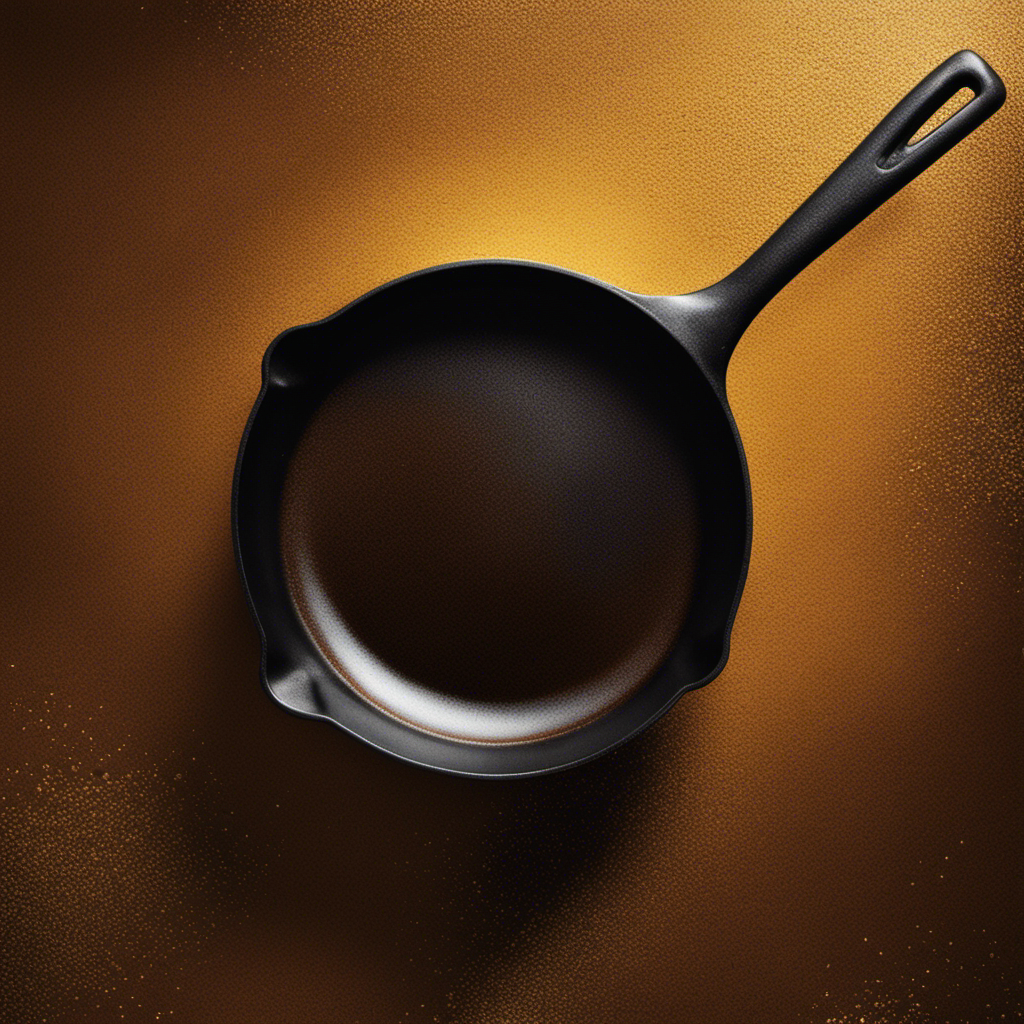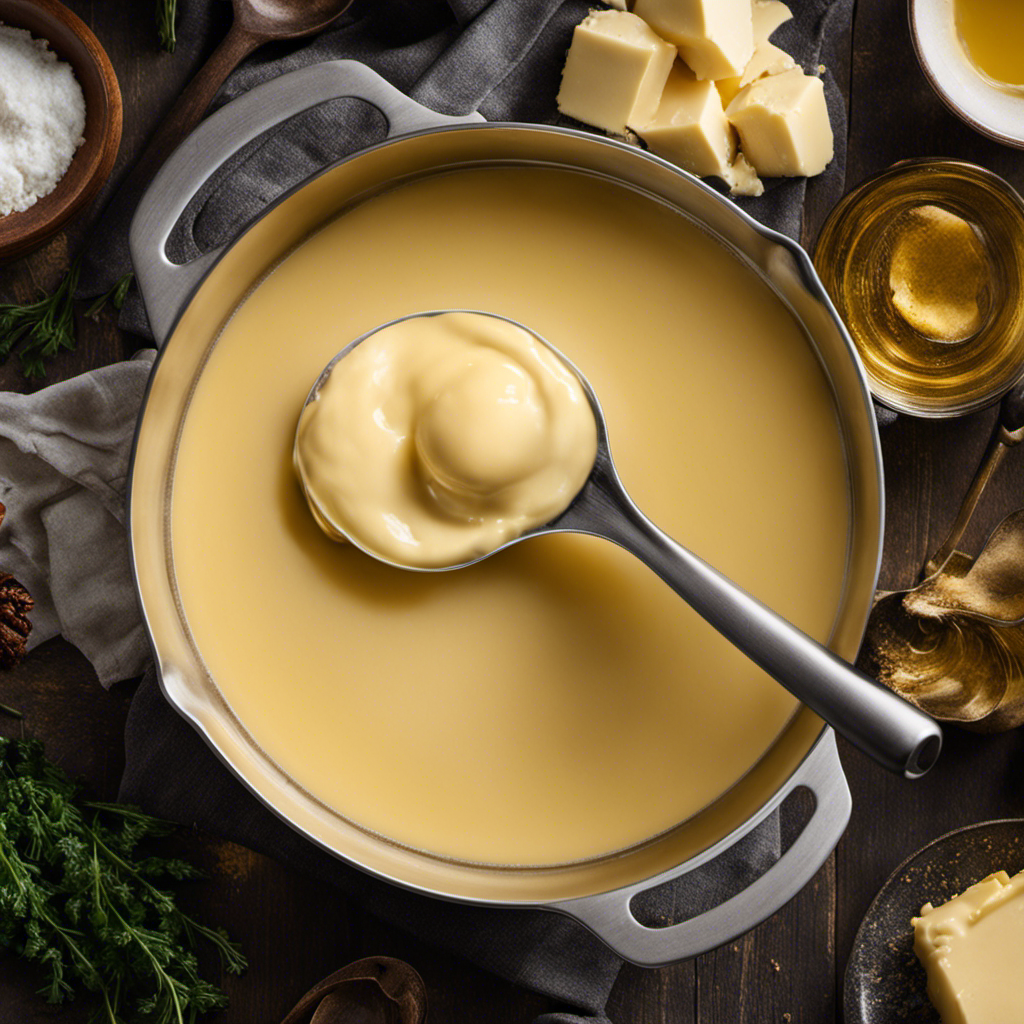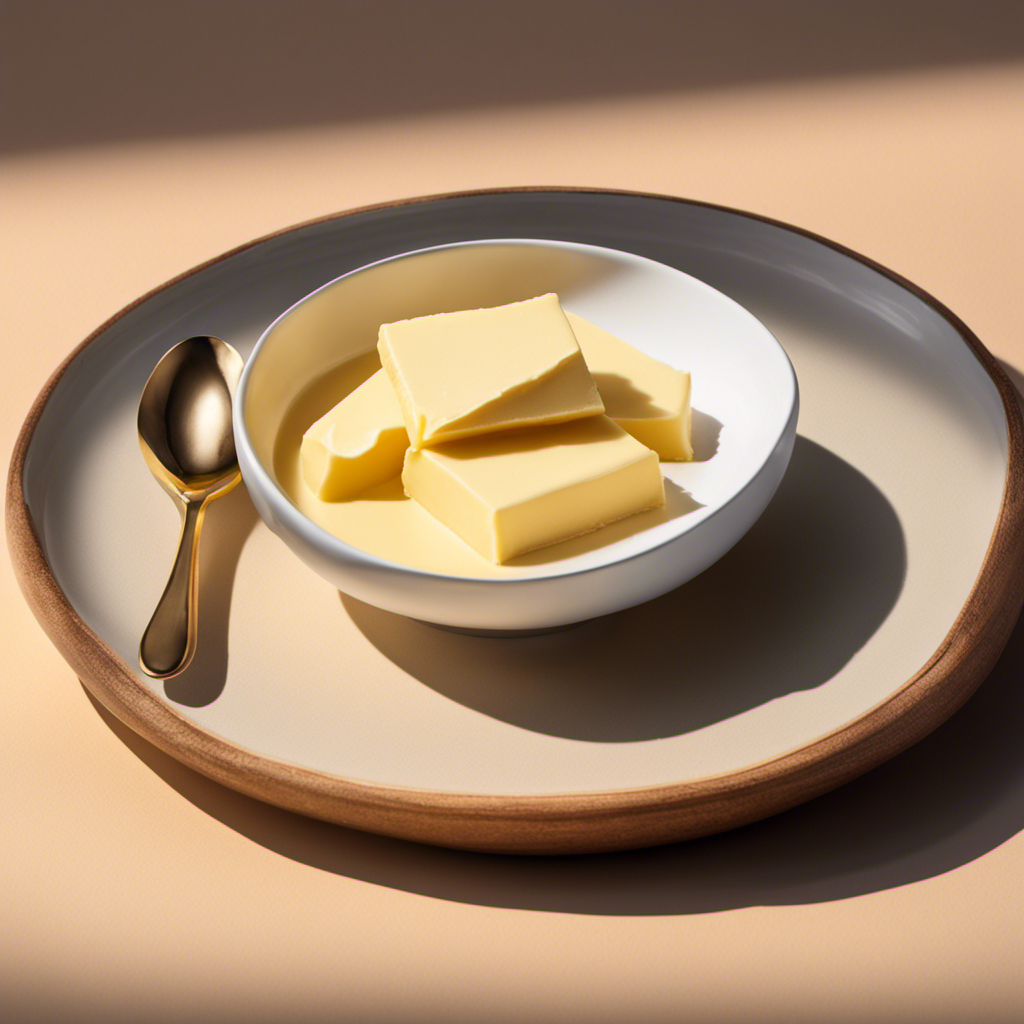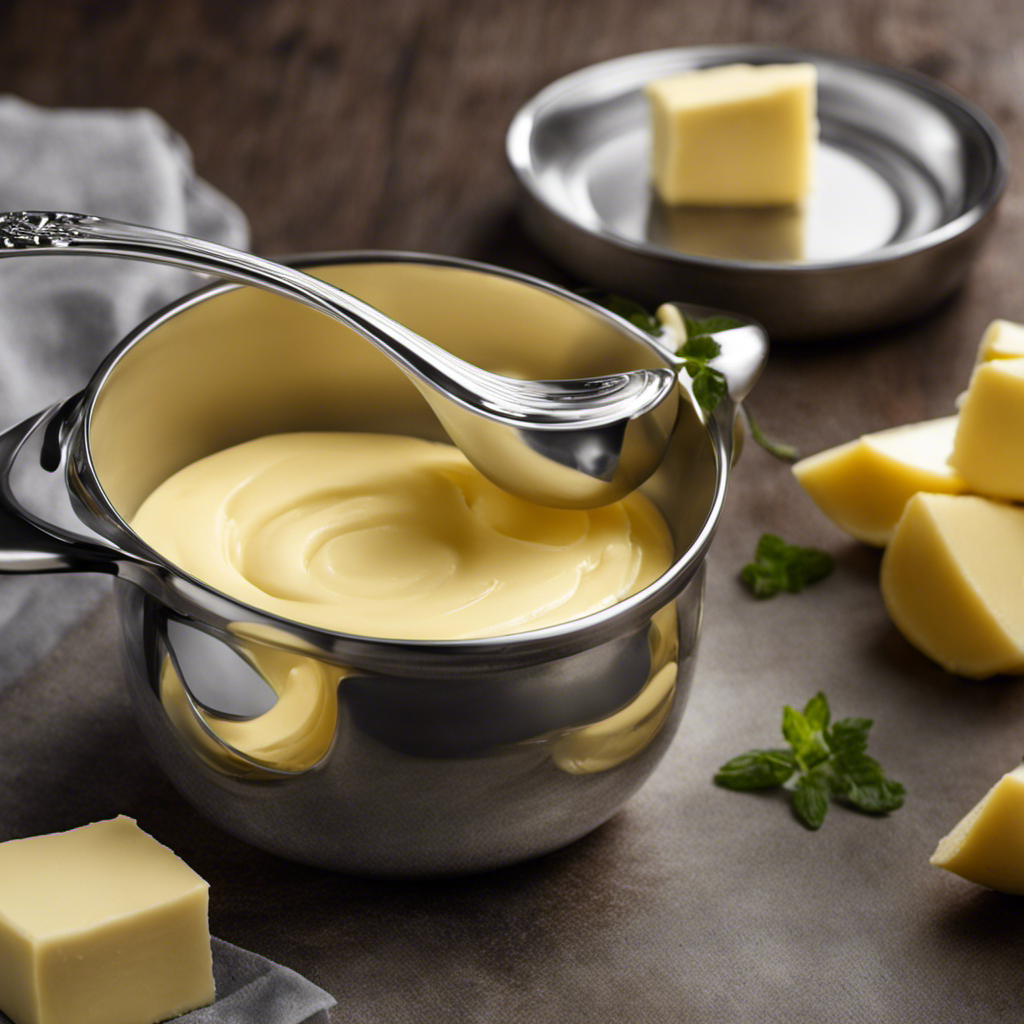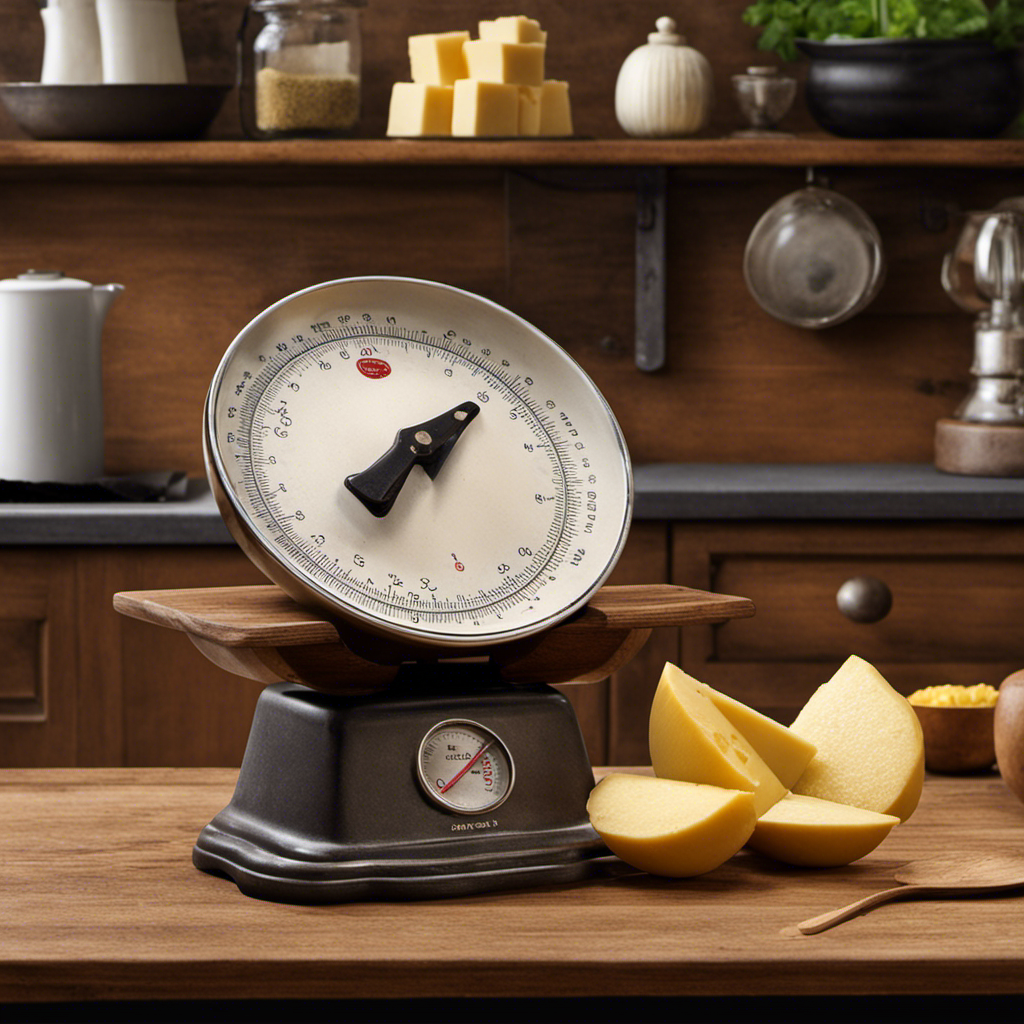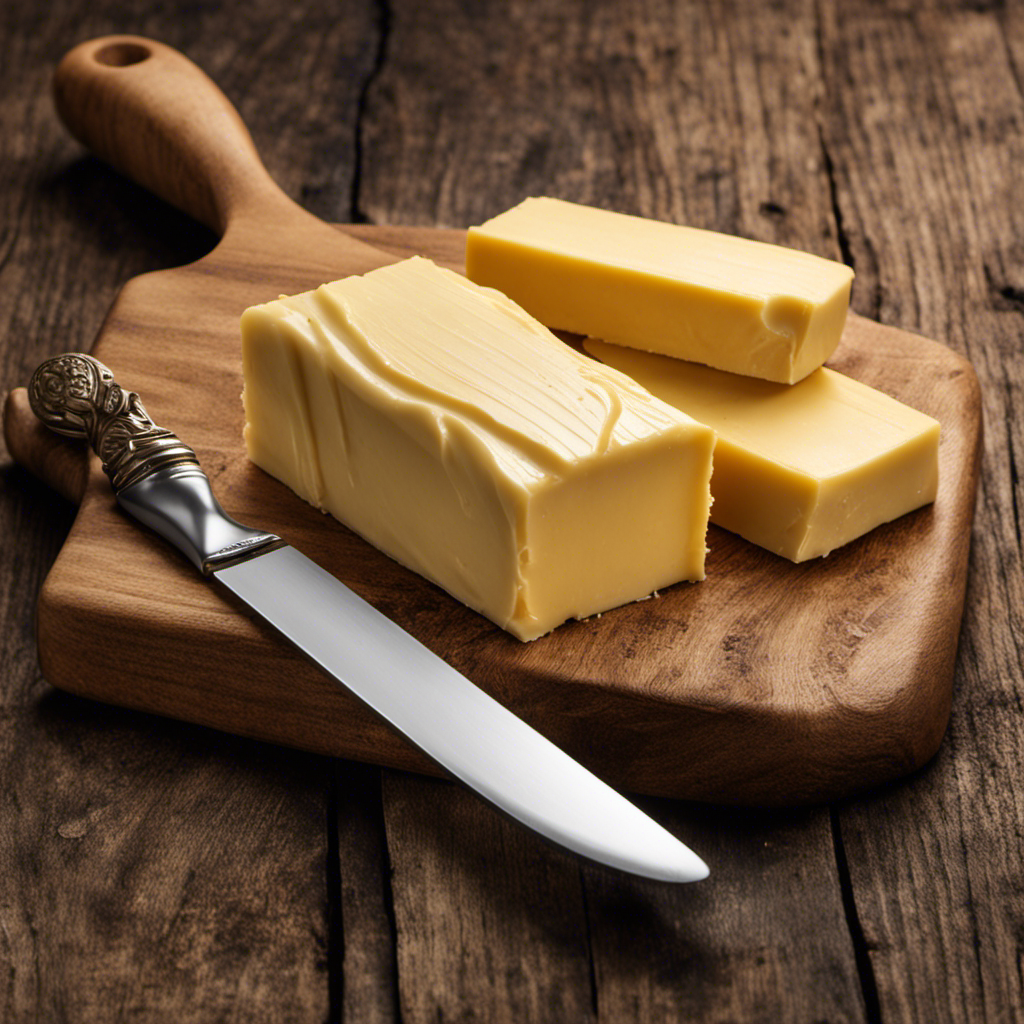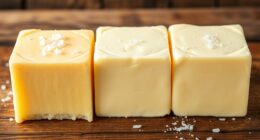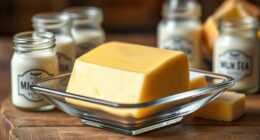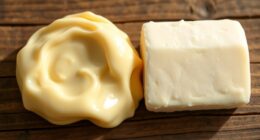Visualize yourself towering above a crackling frying pan, observing the butter melt into a rich, amber liquid. However, the question arises – how can you determine if it has reached the ideal stage of caramelization, or if it has ventured too far and become burnt?
In this article, we’ll guide you through the telltale signs of burnt browned butter. From color and texture to smell and taste, we’ll equip you with the knowledge you need to spot burnt butter and salvage your culinary masterpiece.
Key Takeaways
- Burnt butter is darker and grainier than properly browned butter.
- Burnt butter has a bitter and acrid flavor profile.
- Burnt butter has a strong, acrid smell.
- Properly browned butter has a pleasant, nutty aroma.
Color and Texture
The color and texture of burnt browned butter will be darker and grainier than properly browned butter. When you brown butter, the heat causes the milk solids to caramelize, resulting in a nutty aroma and a rich flavor profile. However, if you go beyond the desired stage, the butter will start to burn, and you’ll notice a distinct change in color and texture.
Burnt browned butter will have a deep, almost black hue, and it will be grainy and clumpy. The flavor profile of burnt butter is bitter and acrid, overpowering the subtle nuttiness and leaving a charred aftertaste.
To avoid burning your browned butter, it’s important to use low to medium heat and keep a close eye on it, employing gentle cooking techniques to ensure a perfect result.
Smell and Taste
You can identify if browned butter is burnt by smelling and tasting it. When butter is heated past its melting point, the milk solids begin to brown, releasing a nutty aroma and enhancing the flavor. However, if the butter is left on the heat for too long, it can easily go from perfectly browned to burnt. The difference between the two can be subtle, but your senses can help you determine if the butter has been overcooked.
Burnt butter will have a strong, acrid smell and a bitter taste, unlike the pleasant aroma and nutty flavor of properly browned butter. Knowing how to distinguish between the two is crucial, as burnt butter can ruin your culinary applications. In terms of storage and shelf life, burnt butter should be discarded immediately, as it can negatively affect the taste of your dishes.
Transitioning to the next section, let’s now discuss the importance of time and temperature in browning butter.
Time and Temperature
Knowing the right time and temperature is crucial for achieving perfectly browned butter. Follow these cooking techniques to ensure your butter is browned to perfection:
-
Use medium heat: Start by melting the butter over medium heat. This allows the moisture in the butter to evaporate slowly, resulting in a rich and nutty flavor.
-
Watch for color change: As the butter melts, it will start to foam and then the color will gradually change from yellow to golden brown. Keep a close eye on the butter to prevent it from burning.
-
Remove from heat at the right moment: Once the butter turns a deep golden brown and releases a nutty aroma, it is ready. Remove it from the heat immediately to prevent further browning or burning.
Visual Cues
Watch for the change in color of the melting butter as it transitions from yellow to golden brown. This visual cue is an important indicator of the browning process in culinary applications.
Browning butter occurs when the milk solids in the butter undergo a chemical reaction called the Maillard reaction. As the butter heats up, the milk solids begin to brown, releasing a nutty aroma and adding depth of flavor to dishes.
However, if the butter is overcooked, it can quickly go from golden brown to burnt, resulting in a bitter taste. Therefore, it is crucial to closely monitor the color change when browning butter.
Troubleshooting Tips
When browning butter, it’s important to closely monitor the color, as overcooking can quickly result in a bitter taste. To avoid this common mistake, here are some troubleshooting tips to ensure your browned butter is just right:
-
Temperature control: Use low to medium heat to prevent the butter from burning. A lower heat allows the milk solids to toast gradually, resulting in a nutty flavor.
-
Constant stirring: Continuously stir the butter as it melts and starts to brown. This helps distribute the heat evenly and prevents any areas from getting too hot.
-
Immediate removal: Once the butter reaches a golden brown color and releases a pleasant nutty aroma, promptly remove it from the heat. The residual heat will continue to cook the butter, so it’s crucial to transfer it to a cool container to prevent overcooking.
Conclusion
In conclusion, determining if browned butter is burnt requires careful observation of color, texture, smell, and taste. It is essential to pay attention to the time and temperature during the browning process to prevent burning.
Visual cues such as dark brown or black flecks should be avoided as they indicate burnt butter. Interestingly, studies have shown that burnt butter can contain harmful compounds like acrylamide, which is known to have carcinogenic properties.
Therefore, it is crucial to avoid using burnt butter in cooking to ensure the safety and quality of your dishes.
